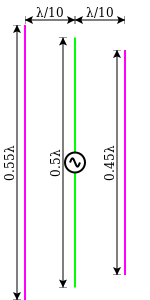Japanese inventor
You can help expand this article with text translated from the corresponding article in Japanese. (April 2020) Click [show] for important translation instructions.
|
This article includes a list of general references, but it lacks sufficient corresponding inline citations. Please help to improve this article by introducing more precise citations. (April 2020) (Learn how and when to remove this message) |

Shintaro Uda (宇田 新太郎, Uda Shintarō, June 1, 1896 – August 18, 1976) was a Japanese inventor, and assistant to Professor Hidetsugu Yagi at Tohoku Imperial University, where together they invented the Yagi–Uda antenna in 1926.
In February 1926, Yagi and Uda published their first report on the wave projector antenna in a Japanese publication. Yagi applied for patents on the new antenna both in Japan and the United States. His U.S. patent 1,860,123 ("Variable Directional Electric Wave Generating Device") was issued in May 1932 and assigned to the Radio Corporation of America.